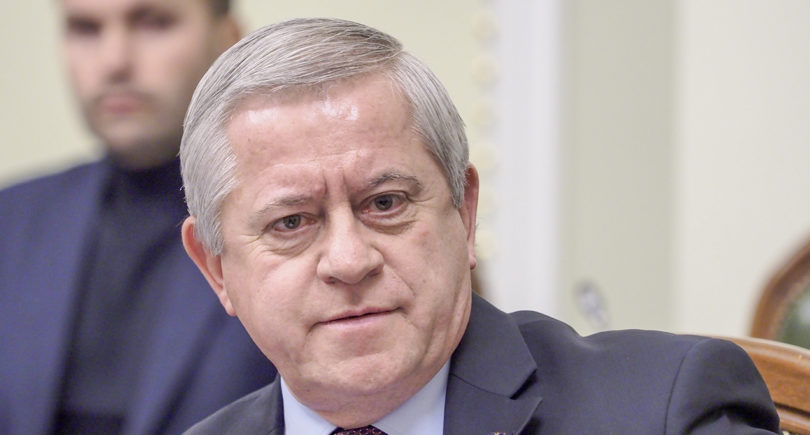
Opinions State emission quotas 1982 26 February 2024
The creation of an emissions trading system requires the solution of many questions to which there are no unequivocal answers
One of the requirements of the Association Agreement with the EU is the introduction of a greenhouse gas emissions trading system (ETS) in Ukraine. The Ministry of Environmental Protection supports the implementation of this requirement and has stated its intention to submit a draft law on the ETS to the Verkhovna Rada this year, launch the pilot phase of the ETS in 2025, and move to the full-fledged operation of the system in 2026. At first glance, everything looks perfect – Ukraine is moving in line with its European integration course, and the government strongly supports this movement. However, when you start looking into it in more detail, serious questions arise about the realism of the stated ambitions.
The main directive on the functioning of the EU ETS (Directive 2003/87/EC) was adopted on October 13, 2003, and only in 2005 the system start working (or rather, the pilot phase). That is, it took the European Union at least 5 years to launch the first phase of the EU ETS.
Of course, Ukraine can use certain ideas and best practices from European legislation. Moreover, given the prospects of joining the EU, Ukraine should build its own ETS taking into account the principles laid down in the EU ETS. However, the problem is that we cannot simply copy the European legislation, especially the one that is currently in force in the fourth phase of the EU ETS.
EU ETS, which was launched in the EU in 2005, is significantly different from the one that is currently in place. And in the future, the EU ETS will change as the EU modernizes its own ETS, correcting mistakes and taking into account changes in climate goals.
The launch of an ETS in Ukraine, which from the first stage would be as close as possible to the current EU ETS, but with certain deviations to take into account the specifics of the Ukrainian economy, requires answers to at least the following questions:
- What is the scope of coverage (types of economic activity, types of greenhouse gases)?
- How to set the upper limit of emissions in the system?
- What will be the rules for the distribution of quotas in ETS?
- Which platform will be the organizer of auctions on the primary and secondary market of greenhouse quotas?
- Who will be the regulator of ETS in Ukraine?
- Who will perform administrative functions in ETS, in particular regarding the registry?
- Will the ETS include mechanisms for government interventions to influence quota prices?
Part of the EU ETS allowances are allocated to companies free of charge based on benchmarks (emissions from the most efficient plants in the industry). If benchmarks are introduced in the Ukrainian ETS, a logical question arises: what data should be used to calculate them?
It took the European Union two phases of its operation (2005-2012) to collect enough data and conduct research to justify some elements of the current EU ETS. The EU introduced the EU ETS without an established emissions monitoring, reporting and verification (MRV) system – this system was introduced in parallel with the launch of the EU ETS. The lack of up-to-date information on carbon emissions at the time of the EU ETS launch created problems that made the system unbalanced. These problems had to be solved by further changes in the EU ETS parameters.
Ukraine had the opportunity to follow a more rational path of introducing its own ETS, as it was assumed that the MRV system would be introduced first, and then the ETS would be created on its basis. On January 1, 2021, the Law of Ukraine «On the Principles of Monitoring, Reporting and Verification of Greenhouse Gas Emissions» came into force. It was expected that the first verified data on carbon emissions (data for 2021) would be available in 2022. But this did not happen. As of now, the MRV system is not working as it should, and we do not have complete emissions’ data, which is very important for substantiating the design elements of the Ukrainian ETS. In our opinion, at least 3 years of full-fledged MRV operation is needed to collect enough data.
In addition to justifying the parameters of the ETS, they also need to be harmonized and implemented in the relevant regulations, which also takes time. Ukraine also does not have enough specialists who could potentially support and administer the ETS. In order to train such specialists, it is necessary to have approved rules for the ETS, and they are currently being developed.
The ETS is a separate regulated market. Its creation requires solving many extraordinary tasks. Forcing the launch of the ETS increases the risks of future distortions in the operation of this system, which may result in it not fulfilling its functions, harming the economy or not being recognized by European partners. Therefore, the construction of the Ukrainian ETS is a long-term, phased process that should be based on a roadmap for harmonizing the Ukrainian ETS with the EU ETS. Only then can we design an ETS that will truly contribute to Ukraine’s European integration and the achievement of our climate goals.
Source of the publication: https://eba.com.ua/naskilky-shvydko-ukrayina-mozhe-zapustyty-vlasnu-systemu-torgivli-parnykovymy-vykydamy/





